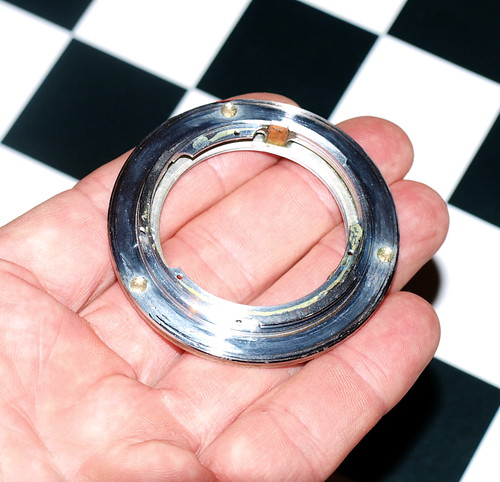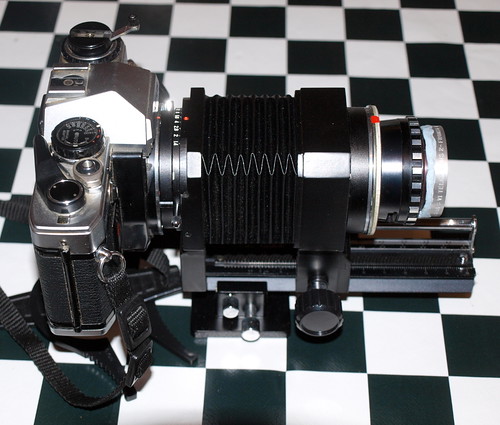On "full frame" 35mm cameras and digital cameras with full frame sensors, the focal length from about 75mm to 100mm is incredibly useful, and not just for portraits, which is what many people think of this kind of lens as being "for". These lenses helps in composing, by being a little more selective in the view, but without losing the perspective completely. They also help by giving pictures a narrower depth of field.
Unfortunately, in the 1970s and 1980s, from whence most of our second-hand prime lenses come from, lenses of this type were not so common: the typical amateur seemed to jump from 50mm to 135mm and the space in between was a limited niche for professionals with a lot more money available. The result is it is quite difficult to get inexpensive lenses in this rather useful range.
I have been experimenting with alternatives. One of these is to use enlarger lenses, which were made in 75mm, 80mm, 90mm and 105mm focal lengths for medium format, and are now very easily and cheaply available.
Enlarger lenses on full-frame 35mm
Here I have used an old Olympus OM10 as my camera body. You could use any SLR or DSLR. The automatic Olympus cameras had an advantage that is quite useful: since they meter light off the back of the shutter curtain and off the film the actual settings presented to the camera by the lens are unimportant, so there's a better chance of getting accurate exposures. But other cameras will be able to get the exposures by other means.
The first, and main difficulty is to mount the lens. Enlarger lenses typically used a "Leica screw mount" or L39 mount (sometimes called M39, but that's not 100% accurate). I took a flange from an enlarger and the metal mount of a broken lens and glued them back to back to make an adapter.

With the adapter you should be able to mount the lens, but be careful it doesn't foul up the SLR or DSLR's mirror. (Some enlarger lenses protrude quite a long way back, I found.) The main problem is now setting the lens the right distance from the film to achieve focus. You might have extension tubes or bellows that will help here. I used an old L39 extension tube with a 75mm enlarger lens in this set-up.
Don't be put off by the fact the enlarger lenses are often quite small.

As it happens, that gives me infinity focus. There is a tiny amount of adjustment available by screwing and unscrewing the lens a little way in the adapter. Or you can change the extension tubes you are using, or else get used to walking backwards and forward to get your subject in focus!
Don't forget the closer the lens is to the camera the further away it focuses, up to "infinity focus" after which bringing the lens still closer will not help focus on anything.
Enlarger lenses differ in their best focusing position. You will have to experiment. Sadly, it seems that the lenses of the most useful focal length want to be rather too close to the camera to allow a bellows to be used instead of extension tubes. But you may be lucky.
In the following I used a bellows with a 90mm lens.

The real advantage of the bellows is that it provides a focus control. As it happened, the bellows held the lens too far out to focus on infinity. That might not have been a problem if I was using the lens for portraits, but to get infinity I used an old friend - the negative telek lens I used a couple of posts ago. The telek (attached to the front this time) increases the focal length to about 100mm, a little longer than I wanted, but at least it gives infinity focus with this particular set of bellows.
My results from these lenses today are still drying after having been developed. I'll post an update shortly with some of them!
Hey there,
ReplyDeleteNice post on the topic! Is it possible to use the enlarger lens on a 35mm rangefinder camera, (zorki c for example) without using extension tubes?